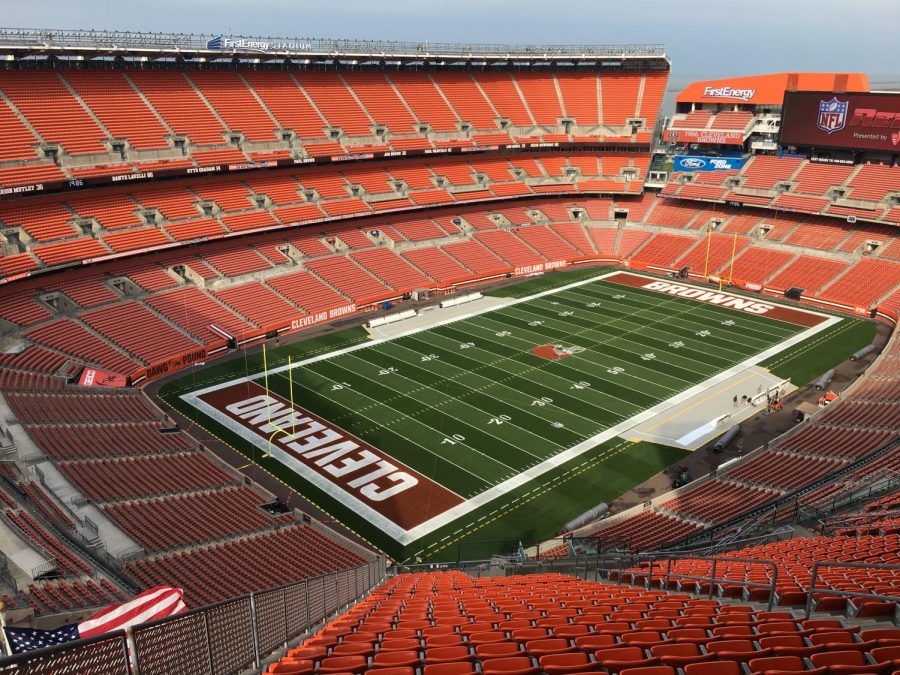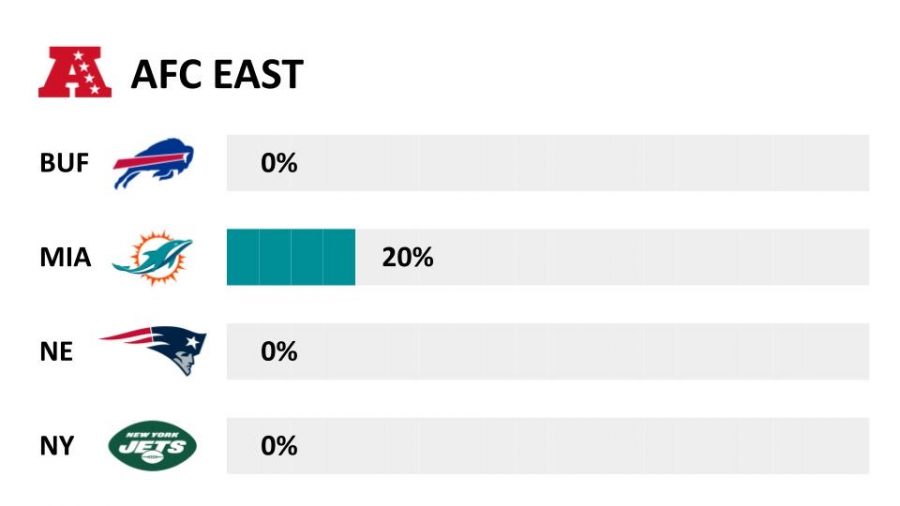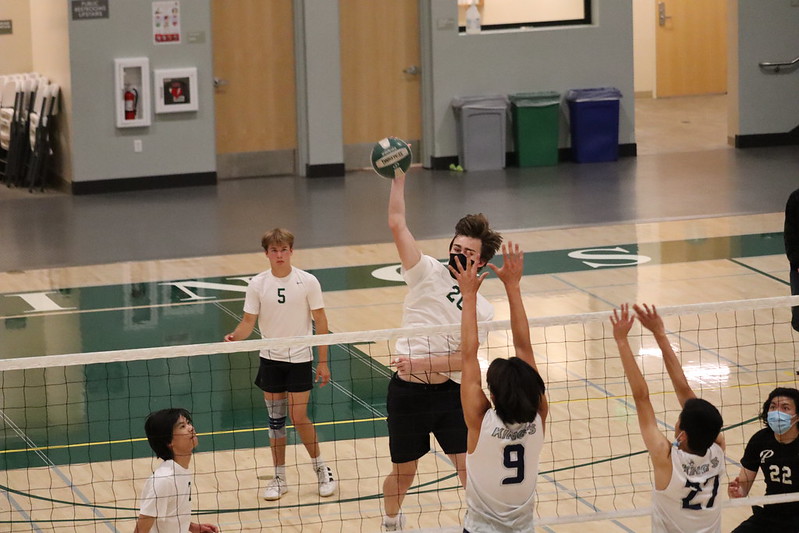Sports Without Fans
Sports continue amidst the pandemic, with different sports taking different approaches. We take a look at how certain teams in the national Football League have adjusted to these new conditions.
March 1, 2021
For the first time in NFL history, home teams have lost more games than they have won. This comes as no surprise given that COVID-19 has forced teams to either limit the number of fans that can attend games or bar them entirely. Home stadiums having fewer fans has an apparent correlation to teams losing more home games than usual.
As football continued during the pandemic, all teams instituted new restrictions on their fan-attendance policies. According to Pro Football Reference, only 1.2 million fans attended professional football games in total this year, which represents a dramatic decrease from the 17 million who attended games last season. This past season, home teams had a combined record of 127 wins, 128 losses, and one tie. On the other hand, throughout the 2019-2020 season, home teams combined for 132 wins, 123 losses, and one tie.
Some teams have been impacted more by their local coronavirus policies than others, one of which being the local San Francisco 49ers. Last season, en route to an NFC title and Super Bowl LIV appearance, the 49ers won six of their eight home games. However, they went 1-4 in their true home games this season (and lost all three games they played after temporarily relocating to Arizona).
At first glance, it may seem as though the primary reason for the decline in performance is related to injuries, as many of the key players who fueled the success of last season have missed multiple weeks. However, the 49ers found success on the road; they won five of the eight games they played as the visiting team, which implies that the team itself still would have been capable of playing well. Instead, a lack of home field advantage has plagued San Francisco.
Santa Clara County guidelines prohibited fans from attending any of the home games. A Harvard study has revealed thatfor every 1,000 people in attendance, the home team’s scoring advantage increases by 1%. The coronavirus restrictions essentially eliminated any home field advantage the 49ers would have had.
One team that appears statistically unaffected by coronavirus restrictions is the Cleveland Browns. At 40%, the Browns’ home field record since 2003 is second to last in the league. This year, however, Brown’s FirstEnergy Stadium held games at only 18% capacity. While the decrease in fan attendance would seem negative at first glance, the Browns performed better and even clinched their first playoff appearance since 2002, ending the NFL’s longest postseason drought. Led by first-year coach Kevin Stefanski, the Browns have gone an impressive 6-2 at home and 5-3 on the road, a notable increase from 4-4 at home and 2-6 on the road in 2019.
Although the Browns improved this past year and had the fourth easiest strength of schedule coming into the 2020 season, the Browns were evidently one of the sole beneficiaries of the coronavirus. First and foremost, because the Browns had one of the least stringent coronavirus restrictions, the Browns had an edge over the many teams that could not host fans at all. In addition, perhaps the lack of home field advantage at other stadiums helped the Browns win. On the road, the Browns scored 10.6 more points than expected compared to 9.3 points more than expected at home. Thus, although the Browns played better than projected, they performed even better during away games where the traditional effects of home field advantage were nullified.
Although we can see how home field advantage with fans can affect professional teams, fans and home field advantage also plays into high school sports. Trisha Razdan (‘21), a senior on the volleyball team, feels that home field advantage is something she looks forward to when competing.
“Home field advantage gets me hyped up for sure. I love our gym and it’s the gym we practice in so it’s easy to bring the hype from practice into games,” Razdan said.
Having fans in attendance can directly impact how well the athletes compete. Former Paly basketball player Ryan Purpur (‘20) believes that having fans in attendance contributes to the performance of players.
“Playing with no fans this year will be extremely tough for the players. I know that a lot of my energy during games came from the fans. The loud chants and cheers give you a boost of adrenaline like no other,” Purpur said.
The lack of fans is seen to have an impact on many athletes, but some sports may be less affected by the change because of the already limited student attendance in the past. Senior pitcher for the Paly baseball team, Ryan Harvey (‘21), thinks that no fans in attendance will not affect the performance of the baseball team.
“Baseball doesn’t have student fans to start so the lower attendance will not really impact the atmosphere at baseball games,” Harvey said.
In many sports, both professional and at the high school level, home field advantage plays a significant role in a team’s success. Many teams, including the 49ers, have suffered from playing in empty stadiums. Others, like the Browns, have interestingly improved during COVID. Ultimately, the energy the fans bring can change the outcome of games and is one of the reasons athletes love playing their sports. Although many teams will see their home field advantage diminished due to the ongoing pandemic, hopefully the thrill of playing with fans will return soon.











